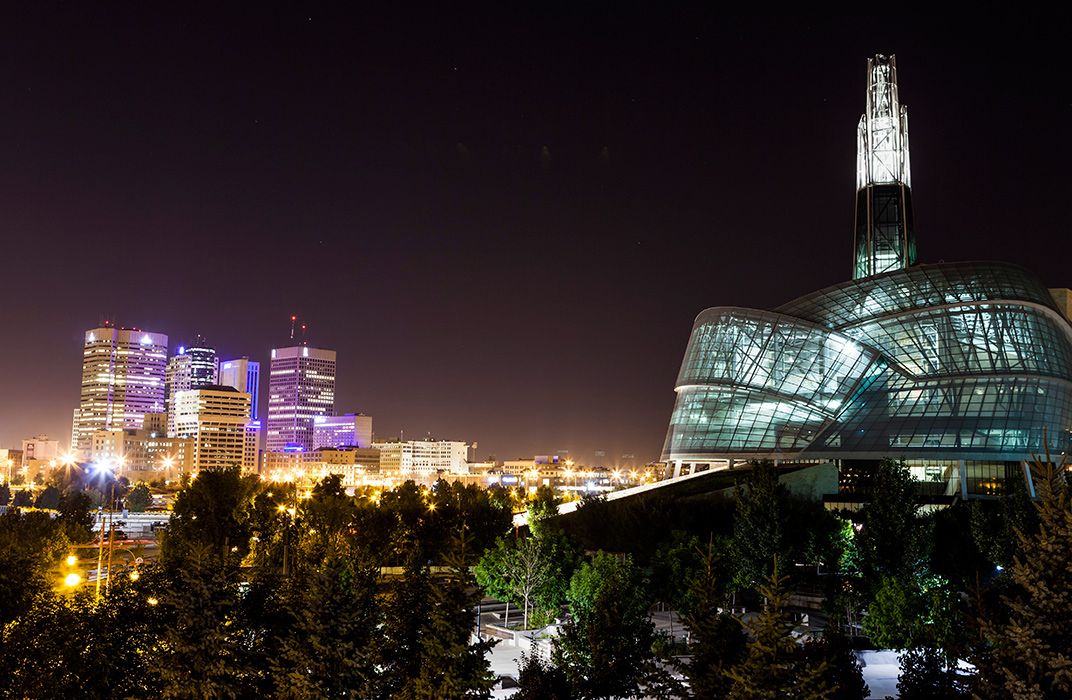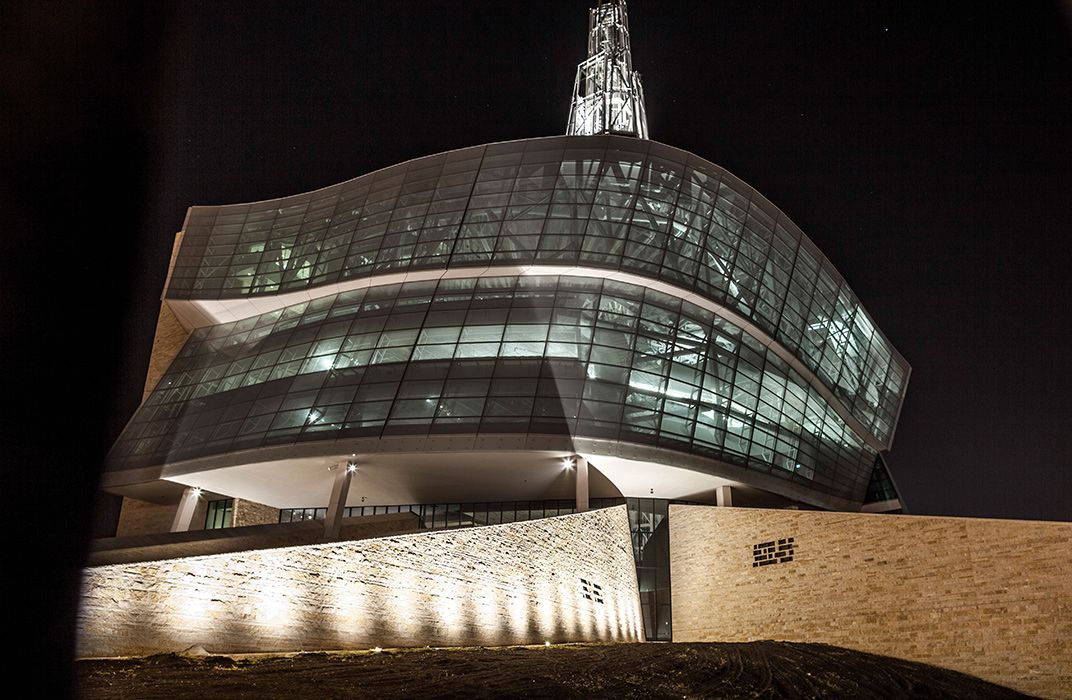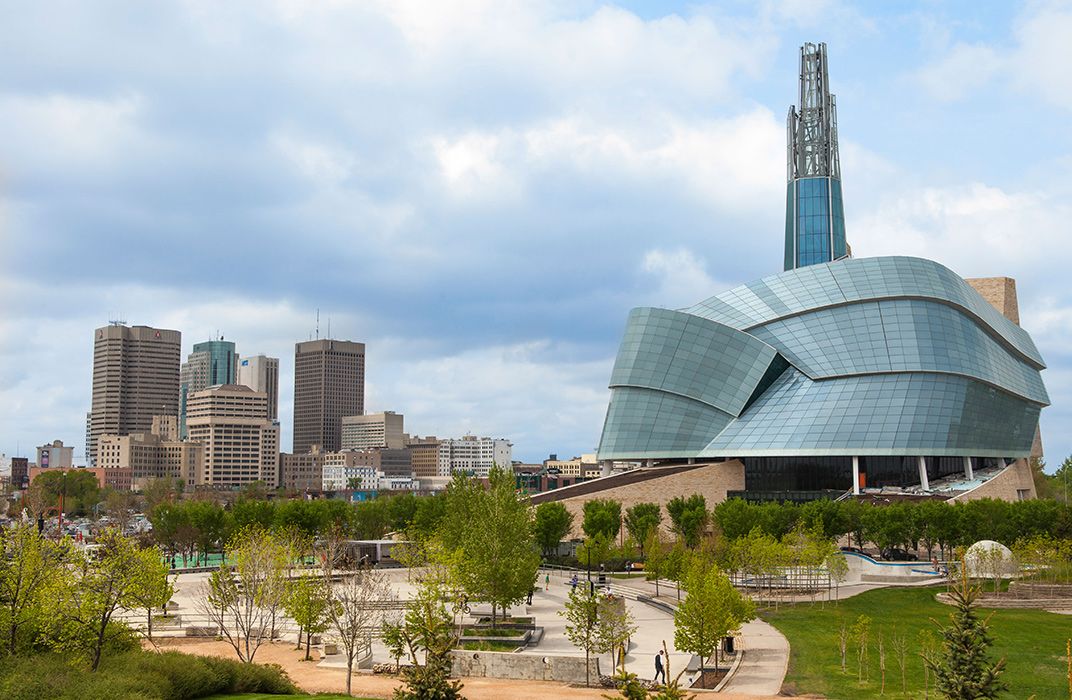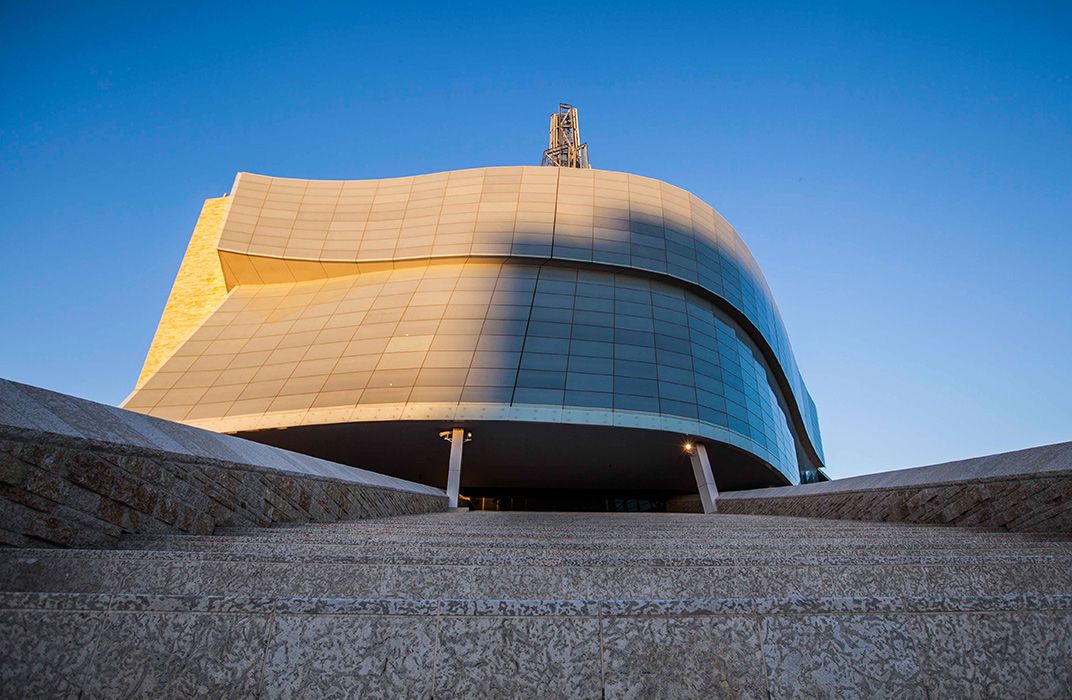What’s the Conflict Over the Museum of Conflict?
The outside of the museum is almost done, but it’s the content inside that is raising concerns
Virtually every part of the $351 million Canadian Museum for Human Rights is symbolic. A 328-foot central spire epitomizes hope. The 450 million-year-old Manitoba limestone bricks, which form a structure called “the mountain,” help to underscore the commonality of humankind. The curved windows—more than 53,000 square feet of tinted glass that mirror the sky—represent the winged embrace of a white dove.
Yet this soaring 23-story monument to human rights, scheduled to open in September 2014, finds itself tethered to earthbound disputes over how to address the legacies of past injustice.
The museum, the first of its kind, says it’s “solely dedicated to the evolution, celebration and future of human rights.” Inside the building, alabaster ramps will ascend through interactive galleries that describe the progress made by ethnic and religious groups, women, aboriginal peoples, gays and lesbians, among others. And some exhibits will highlight Canada’s historical achievements, such as the central role it played in drafting the 1948 U.N. Universal Declaration of Human Rights.
But addressing the triumphs requires delving into the underlying tragedies—and that has led to the controversies that have exposed fault lines in the nation’s multiculturalism. Ukrainian-Canadians were angered to learn that the Holodomor—a 1932-1933 famine-genocide perpetrated by the Soviet Union that cost more than three million lives—would not receive prominent treatment in its own gallery but instead would be subsumed into a broader exhibit on mass atrocities. B’nai B’rith Canada is protesting the decision to exclude the founding of the state of Israel from the exhibit on the Holocaust. Indigenous groups are outraged that the museum has balked at recognizing their historical subjugation as genocide.
Dirk Moses, a historian who has written about the disputes, says these “competitions of memory and recognition” should not be surprising because the aggrieved parties have long struggled for full acknowledgment of the great tragedies they’ve endured. Meanwhile, Canadian commentators bemoan that the museum, which was conceived as a symbol of human justice, has degenerated into a modern Tower of Babel.
Somehow museum CEO Stuart Murray is keeping a serene attitude. The debate, he said recently, is welcomed “because it comes with the nature of what human rights is all about.” —Vicky Gan



